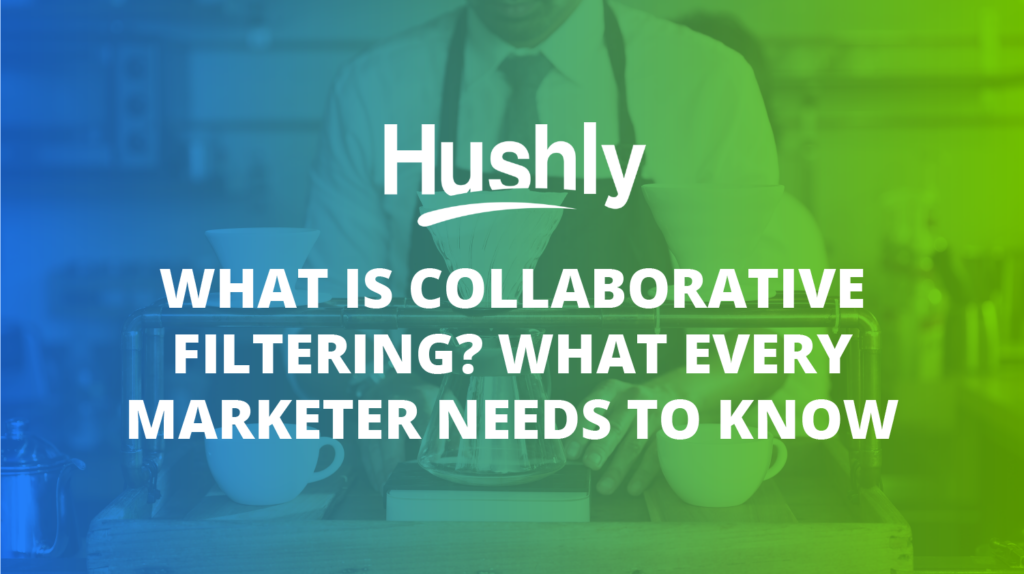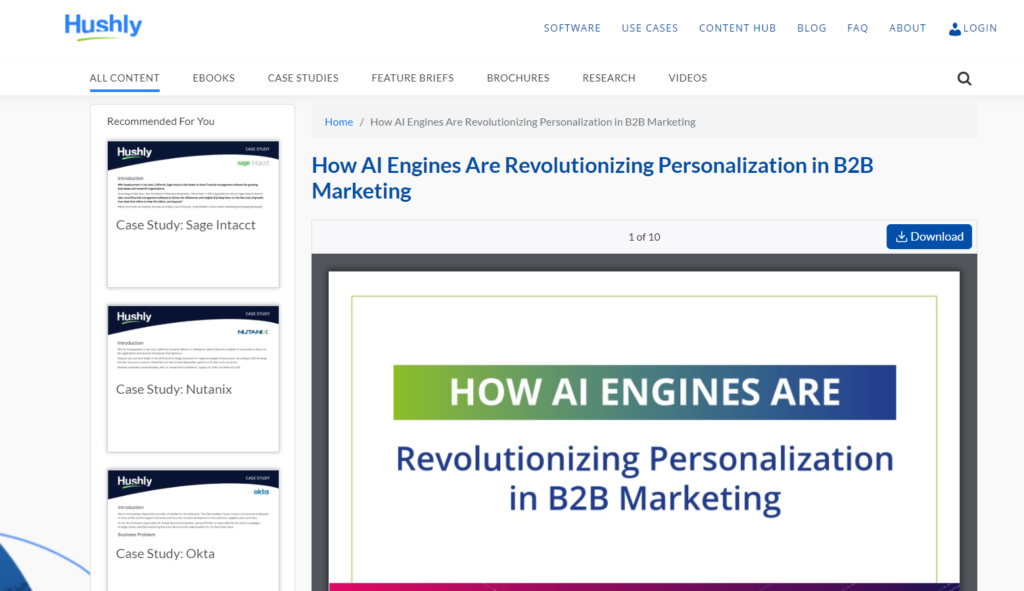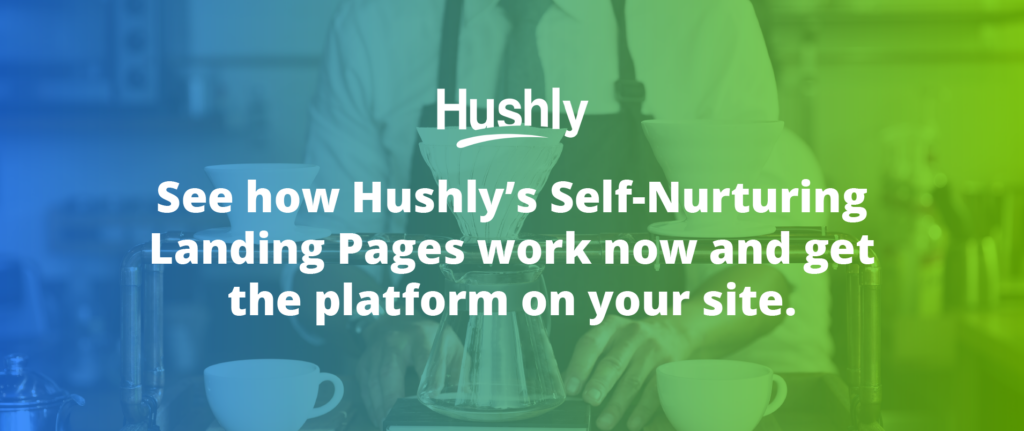Most B2B marketers understand that they need to incorporate personalization and AI into their marketing strategies.
However, they aren’t sure what AI looks like in practice and how it works.
Algorithms in your favorite apps like Spotify and Amazon use special techniques for organizing and offering content. That’s why Amazon will never recommend you hunting supplies if you don’t hunt or Billy Ray Cyrus if you don’t like country music (unless you’ve expressed interest in Old Town Road by Lil Nas X perhaps).
One of those algorithms is collaborative filtering. But what is collaborative filtering, how does it work, and why does it matter to B2B marketers? Let’s break it all down.

What is Collaborative Filtering? Collaborative Filtering Explained
Artificial intelligence uses machine learning to make decisions and supply personalized experiences to every visitor.
The secret behind personalization is the algorithm – several algorithms actually.
A collaborative filtering algorithm uses information based on earlier user behavior to make decisions for the current user.
Let’s say you’re looking for some new music. You have a trusted friend who shares your tastes in music. You tell them you want something that sounds like X, Y, and Z. Your friend might ask if you like A, B, and C and why or why not. They take various factors into account, such as the style, lyrics, and genre, to recommend a new band.
On a massive scale, that’s how Spotify functions. It uses huge datasets on listening history to make recommendations. You can also favorite, save, or thumbs-down artists or songs to help Spotify learn your tastes.
Websites and apps across every corner of the internet in every sector use collaborative filtering algorithms to personalize the user experience.
What is Collaborative Filtering Good for in B2B Marketing?
Marketers may not realize that major B2Bs like Microsoft, HubSpot, and Cisco are already using AI for personalization. AI isn’t the next big trend in B2B, and it’s already here.
You don’t need to understand all the finer details of how AI works, but you CAN learn the basics and how to apply them to your marketing strategy. Here are a few tools for incorporating collaborative filtering into your B2B marketing strategy.
Adaptive Content Recommendations
Did you know that buyers consume at least 13 pieces of content during the buying journey?
Considering six or seven people are involved in each decision on average, it’s impossible to know what topics and types of content they each need at the perfect time – let alone get it in front of their eyes.
Research shows that leads prefer certain types of content depending on their stage of the buying process. In the early stages, buyers like to consume websites, reviews, and reports. Further along, however, their attention shifts to vendor videos.
An Adaptive Content Hub intuitively knows which stage of the buying process a visitor is at because it analyzes their behavior and compares it to the behavior of previous visitors.
On the front end, every visitor gets personalized content recommendations from collaborative filtering based on their behavior, interests, and stage of the sales cycle.
Not only does this help improve their experience, but it also allows them to nurture themselves from the second they visit your website.
All you have to do is focus on creating the best content possible. The algorithm gets it in front of their face at the right time. Here’s an example in action:

Source: Hushly
Self-Nurturing Landing Pages and Content Bingeing
B2B landing pages without AI are boring and outdated – especially to younger visitors.
Research shows that 59% of all B2B buyers are millennials now. They’ve had access to personalized content everywhere they go online for years now.
Most landing pages aren’t designed for success. That’s why conversion rates are so low.
For one thing, most B2Bs rely on clunky forms to capture leads. Considering 70% of B2B searches happen on mobile devices, gated content with forms sets you up to drive away readers.
Self-nurturing landing pages with collaborative filtering offer a different solution.
Instead of presenting visitors with dead-end landing pages, you can give them the choice to binge your content with personalized recommendations. The collaborative filtering algorithm considers their behavior to offer relevant content based on the page they already viewed and how previous visitors behaved.
Keep in mind that buyers complete up to 90% of the sales process alone without ever contacting a sales team. Your website needs to do the heavy lifting by making your content as easy as possible to access. Self-nurturing landing pages make it happen.
Relevant and Engaging Exit-Intent Popups
There’s a huge trend right now in both B2B and B2C to bombard visitors with forms as they try to leave a website. When you want to leave a website, the last thing you want to do is give them your personal information.
This strategy is sad because exit-intent popups have so much potential to reduce bounce rates, draw visitors back in, and nurture leads.
Collaborative filtering algorithms are a game-changer here.
Instead of asking your visitors to fill out an annoying form, you can use an exit-intent popup to present them with personalized content recommendations based on the content they already viewed while they were on your website.
Of course, it also considers the behavior of other users as well before offering personalized content.
These algorithms don’t work in a vacuum, either. As a hybrid model, they use several other algorithms based on other factors like popularity, importance, and intent data to create the most relevant experience possible for everyone.
Visitors are much more likely to stick around and read more of your content when you’re throwing amazing content at them instead of an invasive form.
Use Personalized Recommendations to Skyrocket Leads
Hushly can help you take control of the power of AI to create personalized experiences for every visitor using data you’re already collecting. Instead of dead-end landing pages and unorganized blogs, Hushly uses collaborative filtering and other techniques to offer relevant content recommendations, whether a visitor is known or anonymous. The result? Leads jump by 51% guaranteed!

